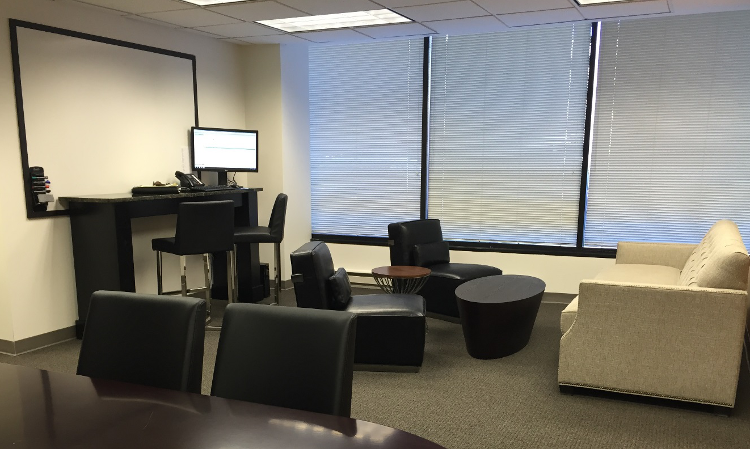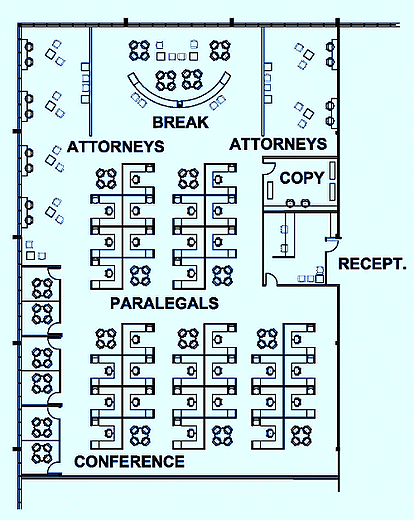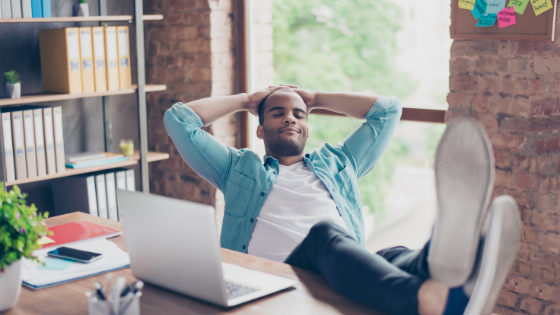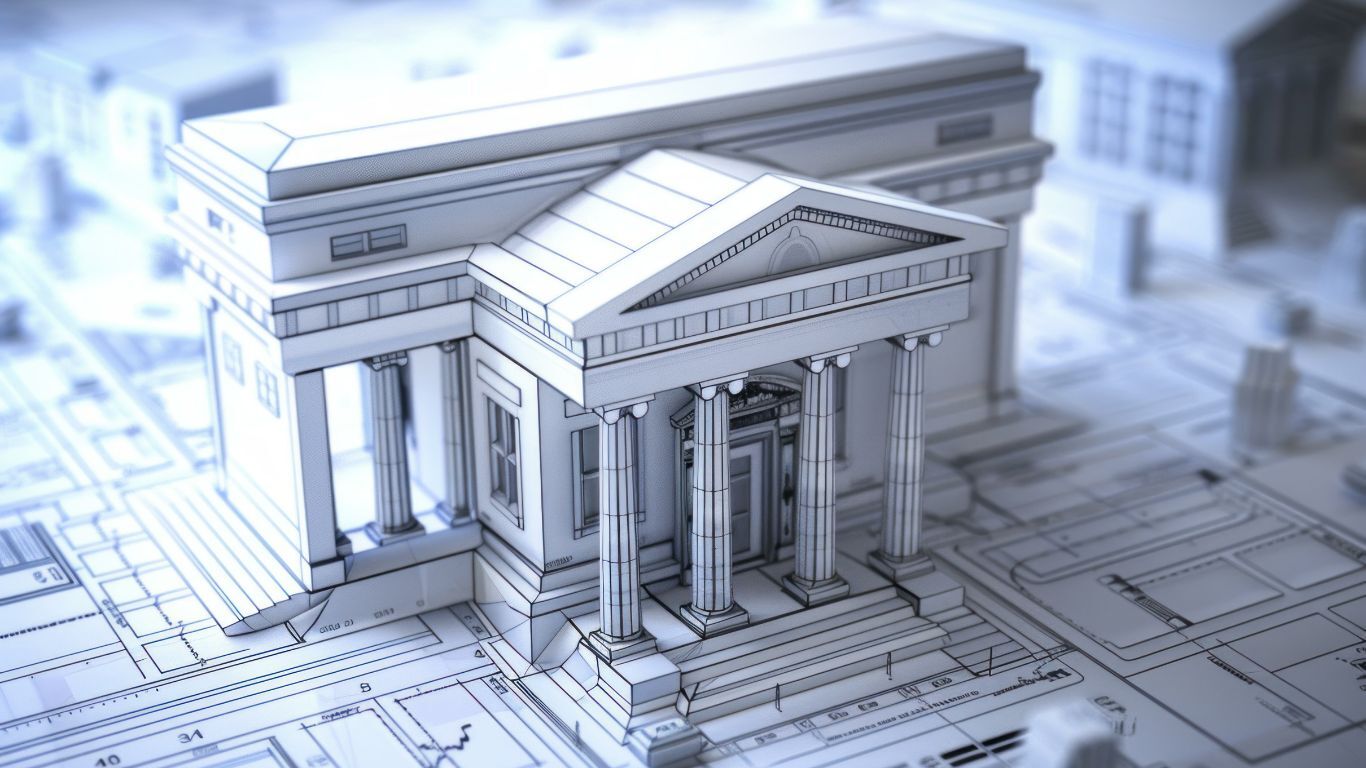Recently, I received several comments in response to my blog, The Ruling Is in High Tech Mobile Law Offices Really Work, requesting more detail about the function and layout of my attorney’s new office. My attorney was more than willing to give me a tour of the office, and here is what I discovered.
As described in my previous post, the office contains a large open area filled with contemporary design workstations for paralegals, touchdown desks and seating areas for the attorneys, and glass-walled conference rooms. Such spaces, which have become a standard for tech-oriented offices, can also function well for law offices.
By Alan Ruby, Senior Architectural Consultant
Although my attorney’s new office is not quite as mobile as Matthew McConaughey’s Towncar office in the movie The Lincoln Lawyer, it is still a significant departure from a traditional law office.

This should not be surprising. As my attorney commented when we met, the practice of law is affected by the increased mobility allowed by the technological advances of the digital age. Thanks to Wi-Fi and smartphones, many meetings and visits to the courthouses he previously needed to attend in person could now be accomplished remotely.
Additionally, as explained in my article about the growing number of empty courthouse file rooms, Space: The File Frontier, the introduction of electronic case filing has completely reoriented both court personnel and private trial lawyers from paper to the use of electronic media. This trend has similarly reduced or eliminated the need for file rooms to store paper case files and briefs in private sector law offices.
So, how have these trends influenced the design of my attorney’s new suburban Virginia office? The office is divided into several different “neighborhoods,” each with its furniture and features based on how the employees work. The drawing below presents an example of how the neighborhoods are configured to compose a larger office. (The numbers and labels on the picture correspond to the following numbered descriptions.)
Flexible Offices Benefit Law Practices
 1. The most significant space in the office is an open area filled with workstations for 30 paralegals. There is no sharing of workstations. The paralegals predominantly work individually at their assigned workstations, entering case data, talking with clients and opposing counsel on the phone, and conferring with attorneys by telephone or email.
1. The most significant space in the office is an open area filled with workstations for 30 paralegals. There is no sharing of workstations. The paralegals predominantly work individually at their assigned workstations, entering case data, talking with clients and opposing counsel on the phone, and conferring with attorneys by telephone or email.
2. The next largest area is occupied by six touchdown stations and casual seating areas, shared by the ten attorneys who use this office. Since the attorneys are frequently out of the office attending trials or depositions, the six to ten-sharing ratio has proven entirely workable.
Occasionally, the paralegals meet with one of the attorneys to discuss the progress of a case. In these situations, the discussions usually occur in the attorneys’ casual seating areas.
3. Six small glass-faced conference rooms are at the paralegal’s open workstation perimeter. They are grouped in pairs that can be connected to form three larger conference rooms by opening an operable acoustic wall that separates the two rooms. They are principally used for attorney meetings or attorney-client meetings that require a measure of confidentiality.
4. Support spaces include a small copy and supply room, combination break room, casual staff meeting area, and reception area. I just wanted to let you know there was no need for a file room.
This office location has now been operating for nearly a year. It took some very foresighted leadership from the senior partner to convince the other attorneys and the support staff that this was a good idea for the law firm. Although law firms may be the polar opposite of tech companies regarding corporate culture, many of the same mobile and collaborative space concepts can be used in an open office environment.
Everyone loves the new layout from my last discussion with my attorney and the casual comments of several paralegals and two other attorneys I met when I toured the space. It is bright and cheery; it functions well for them since it was designed to fit how they currently perform their work precisely – and don’t forget those increased bonuses due to the savings on rent.























